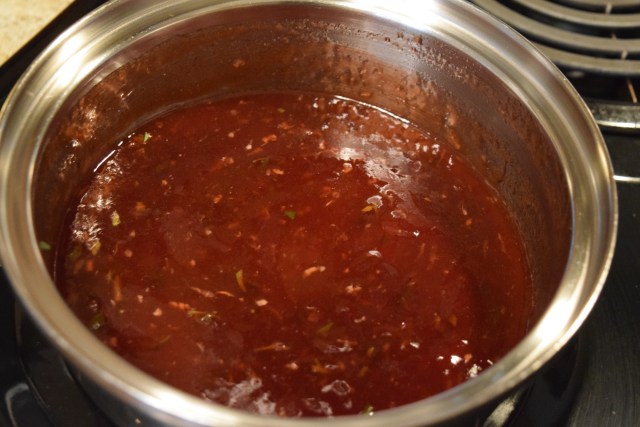During our trip to Old Town Alexandria, Virginia, we had a very delicious meal that the restaurant called Salmon Chesapeake. It was salmon topped with lump crab meat with a cream sauce. For our attempt to replicate this meal, we went with a cross between a Veal Oscar and a stuffed flounder. We love Hollandaise sauce with salmon, so we decided to use that as our sauce, which worked out really well. This isn’t a complicated recipe at all, but it looks and tastes wonderful, so it is a perfect dish for entertaining. We ate it as a weeknight dinner with some asparagus, which made for a perfect combination. We used a packaged powder mix to make our Hollandaise sauce, but you can certainly make it from scratch if you prefer.

INGREDIENTS
- 4 Salmon Filets – 4 oz each
- 2 tbsp Extra Virgin Olive Oil
- 1 Lemon
- 1/8 tsp Garlic Powder
- 1/2 lb Lump Crab Meat – cleaned of all shells
- 1 cup Panko Breadcrumbs
- 2 tbsp Mayonnaise
- 1/8 tsp Cayenne Pepper
- 1 Clove Garlic – minced
- 1/4 Green Pepper – finely chopped
- 1 Egg
- 1 1/2 tbsp Spicy Mustard
- Salt and Pepper to taste
INSTRUCTIONS
Pre-heat the oven to 350 degrees Fahrenheit. Rub the salmon with the olive oil and sprinkle with salt, pepper, and garlic powder. Zest the lemon over the salmon and then drizzle with the juice of half of the lemon. Place the salmon, skin-side down, onto a baking sheet lined with aluminum foil sprayed with a non-stick spray. Beat the egg in a small bowl with a fork or whisk. In a large mixing bowl, combine the crab, mayonnaise, mustard, breadcrumbs, egg, green pepper, garlic, and the juice from the other half of the lemon and mix until well blended. Transfer to the crab mixture to a small casserole dish that has been sprayed with a non-stick spray. Place the salmon and the crab mixture into the oven and bake for 20 to 25 minutes. If necessary, put the salmon on a higher rack than the crab mixture. Cook the Hollandaise sauce according to the directions. Remove the salmon and crab mixture from the oven and begin to plate. Spoon 1/4 of the crab mixture on top of each salmon filet and then drizzle with the Hollandaise sauce. Serves four.




















